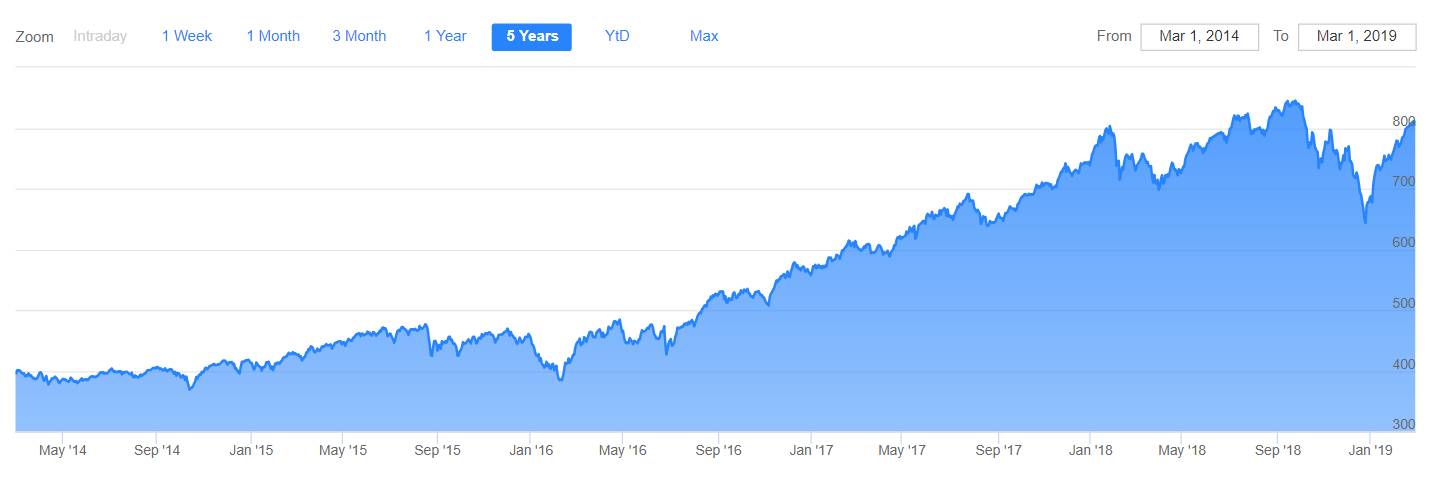Why Employee Engagement is a Smart Investment
Investing in engagement? We look at a funds manager who invests based on employee engagement, and research backed strategies for boosting engagement in your organisation.
Investing in engagement...literally.
A funds management firm that invests based on employee engagement? Well that’s exactly what Dan Ariely and his firm, Irrational Capital, do and they are generating huge returns - yet more evidence that organisations with engaged employees perform better.
Ariely is not your traditional fund manager. A professor of psychology and behavioural economics, he is an expert in motivation.
When Ariely and the team at Irrational Capital pick stocks, they don’t look at financial statements, they use metrics aligned to what they know best – motivation and engagement.
The results of this unconventional approach speak for themselves. Over the last 5 years, Irrational Capital’s Clear Motivation Index has risen over 100 percent, compared to just over 50 percent for the S&P 5007.
Means nothing to me, you say? Well, to put it in perspective, most professional fund managers who rely on financial metrics to make investment decisions fail to outperform the S&P 500 – Ariely and his team smashed it by 100%.

So what does this tell us?
It tells us that organisations that focus on employee engagement don’t just see happier, more productive employees - they increase the performance of the organisation as a whole.
Admittedly we’re looking at share price increases in for-profit organisations here, but that’s just the measure of performance in that space. Every organisation, regardless of size, sector or industry benefits when their employees are engaged.
And here’s why…
How engagement drives results
Ariely explains that what really matters to organisational performance is “goodwill” - the gap between the minimum effort an employee makes to keep their job, and the effort they make when they are fully engaged.
In organisational psychology the “goodwill” Ariely refers to is known as organisational citizenship behaviour (OCB).
OCB is discretionary effort on behalf of employees to help the organisation - like working extra hours or taking the initiative to improve things - and leads to increased organisational productivity, efficiency and customer satisfaction4.
The more engaged employees are, the more likely they are to put in that extra effort.
Employee engagement has a raft of other benefits too. Engaged employees perform better2,5, have higher job satisfaction, show greater commitment to the organisation and are less inclined to leave6.
Research has even shown that employee engagement has a significant influence on innovative work behaviour, boosting the creation, introduction and application of new ideas1.
In short, engagement leads to just about every positive outcome you could ask for.
Factors that influence employee engagement
Although there are many factors that influence engagement, they aren’t all equal. The big-ticket items that influence employee engagement are employees feeling:
- fairly treated1,6
- that management are open and honest1,6
- valued and appreciated6
- genuinely cared about6, and
- safe to express one’s self, take risks and fail without fear of ridicule1,5,6
There are two interesting things to note about this. First, money is not on this list. It’s important to a degree, but not a major determinant of engagement.
Second, these are all environmental and are therefore strongly influenced by an employee’s direct manager. Research shows that managers account for 70% of the variance in employee engagement scores3.
So, when looking to boost engagement, the most bang for buck is to invest in driving the right leadership behaviours.
Driving the right leadership behaviour
The first step in the process is to identify whether your managers are engaging in the right behaviours to drive employee engagement.
Your upward feedback processes (i.e. feedback from team members about their leaders) should be capturing the factors that drive engagement and giving you the insights you need to take action.
For example, do your managers:
- treat their team members fairly?
- involve team members when making decisions?
- communicate with transparency?
- recognise and appreciate the efforts of others?
- show consideration for their team members?
- make it safe for team members to share their thoughts and opinions?
- deal with mistakes in a positive way?
Once you have this data, you need to provide the appropriate leadership development to address any problem areas.
Every manager will be different so best to use an individualised leadership development strategy like 1-to-1 coaching or assessments.
If you have trends or problem areas across the business, you can address these with targeted workshops (providing it’s cost effective!).
Give it a couple of months then reassess and adjust each manager’s development plan accordingly. Just remember that behavioural change takes time and sustained effort – there are no overnight fixes!
If your need help driving the right leadership behaviour from your employees, Leadership Success has a number of assessments which are designed to help.
You can also learn more on which leadership assessment tools can help identify areas for development in employee behaviours.
This article is built on the following research:
- Agarwal, U. A. (2014). "Linking justice, trust and innovative work behavior to work engagement." Personnel Review, 43, 41-73.
- Christian MS, G. A. (2011). "Work engagement: a quantitative review and test of its relations with task and contextual performance." Pers. Psychol. 64, 89–136.
- Gallup. (2015). State of the American manager: Analytics and advice for leaders.
- Podsakoff, N. P., Whiting, S. W., Podsakoff, P. M., & Blume, B. D. (2009). "Individual- and organizational-level consequences of organizational citizenship behaviors: A meta-analysis." Journal of Applied Psychology, 94(1), 122-141.
- Rich BL, L. J. (2010). "Job engagement: Antecedents and effects on job performance." Academy of Management Journal, 53, 617–635.
- Saks, A. M. (2006). "Antecedents and consequences of employee engagement." Journal of Managerial Psychology, 21, 600 – 619.
- Thomson, J. (2018) ‘Meet Dan Ariely, the hedge fund star who never looks at financials’, Australian Financial Review.
